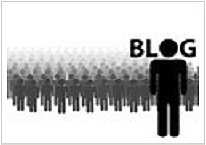Who is your intended audience?
 Knowing who your intended audience is — and understanding they way they think — can go a long ways towards creating useful directed content.
Knowing who your intended audience is — and understanding they way they think — can go a long ways towards creating useful directed content.
As I begin to write this, I realize that I have no idea who my actual audience is. That may sound a bit strange given the title of this post, but it’s actually somewhat normal for a new blogger to not have a full grasp of who’s reading, at least in the beginning.
However, I am fully aware of who my intended audience is. I set out writing this blog with the intention of supplying useful information to a group of writers, editors, and teachers that incorporate the Internet and technology into their profession. By choosing a specific audience before I started, I was able to direct my thoughts, energy, and writing style in a much more focused manner.
That’s not to say that only people from my intended audience will read this blog, but rather it’s the recognition that there will be a small subset of people most likely to take interest in what I write. Why should I pander to the masses when all that does is lessen the impact of your message?
So what are the advantages of applying the magnifying lens to what you write and discovering your intended audience? By choosing a target audience, you can narrow down the range of topics that you’ll be discussing.
That sounds like an intuitive approach; however, bloggers far too often spread themselves thin by ranging too far into topics that are generalized and weak in content. With a narrower range of topics, a blogger can focus more effort on those topics and provide content that’s fresh and interesting. As the Internal continually expands its buffet, laden with information, a more focused approach will yield results that stand out.
Let me use an analogy. Cookie Monster likes cookies. He likes big ones, small ones, cookies with chocolate chips, cookies with raisins, cookies with banana cream, cookies with caramel icing… the list goes on. Cookie Monster is not exactly a discerning creature of taste when it comes to cookies.
Now, I don’t know about you, but when it comes to making cookies, I don’t know much. The one delicious exception is peanut butter cookies. I make a mean peanut butter cookie, let me tell you. I don’t know much about all those other cookies, but I think I could get some recognition for those peanut-buttery morsels of goodness.
For that reason, I want to publicize my peanut butter cookies, giving people a chance to try them. Who is my intended audience? My audience will be people (or creatures) that like peanut butter cookies. While I expect peanut butter lovers the world over to flock to my creation, I may pick up a few extra fans on the way. The Cookie Monster, with his wide range of tastes, may very well take my cookies and enjoy them. But I’m not targeting Cookie Monsters. I’m targeting peanut butter cookie fans.
In this analogy, by focusing on the intended audience, real value is added to the topic. Sure, there may be only 4,000 fans instead of 40,000. However, those 4,000 fans are likely to be loyal and dedicated to the topic, one that interests them highly.
Before I close, I should note that this advice doesn’t insinuate that you should always write about what you know best. A writer can, with research and practice, target say… underwater basket weavers in the Maldives without previous experience on the topic.
While this runs contrary to what most bloggers suggest, it’s completely viable as long as your intended audience is designated beforehand. The writer may have a huge learning curve ahead, knowing little about underwater basket weaving in the Maldives. But with dedication, research, and a love for discovery, the writer may very well reach the goal of providing valuable and relevant content.
There are other considerations like word usage and style when targeting an audience. However, determining who you’re writing for is the key.
This is really a great site. Very nice post. I just stumbled upon your blog and wished to say that I have truly enjoyed surfing around your blog posts.